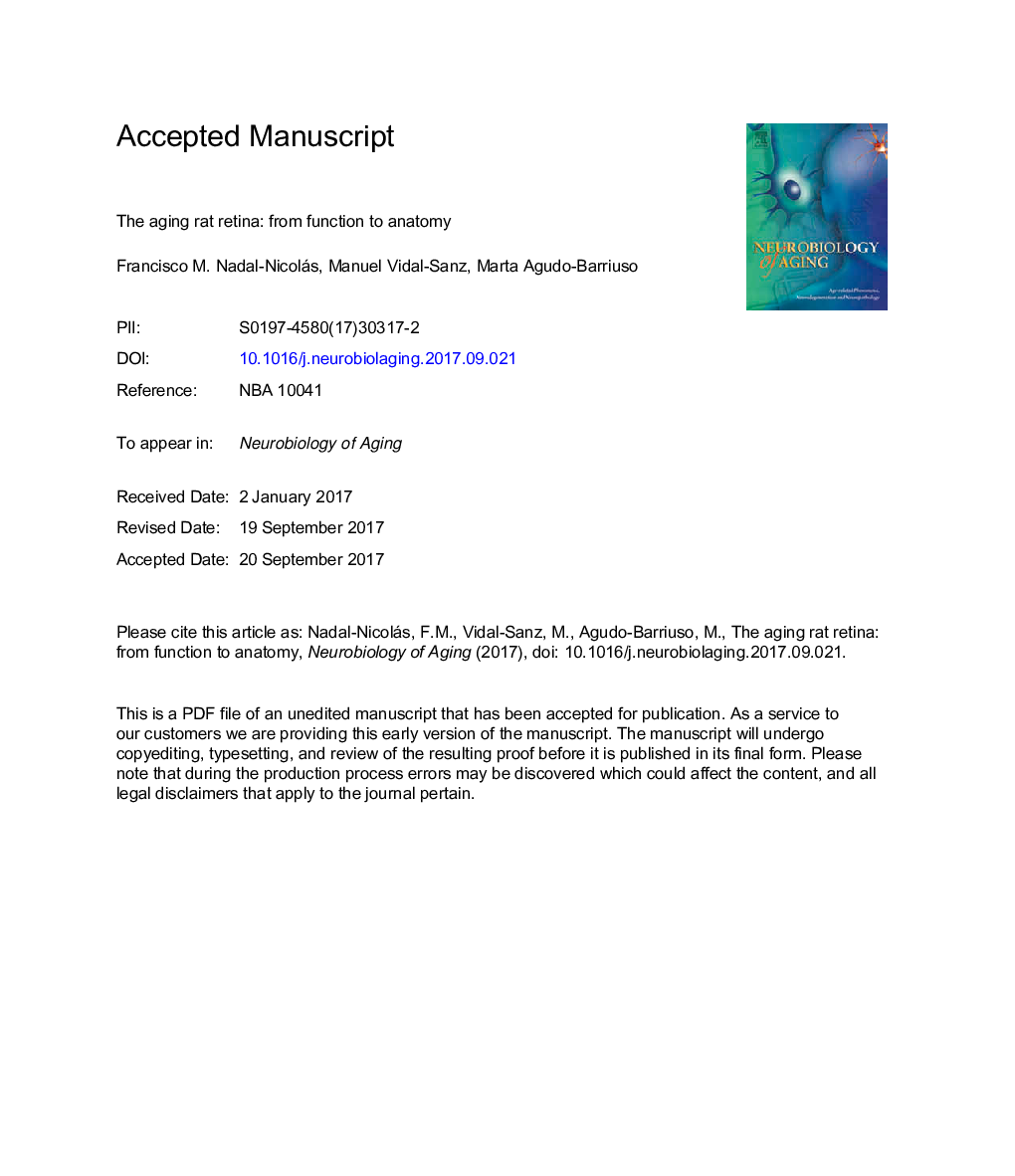| Article ID | Journal | Published Year | Pages | File Type |
|---|---|---|---|---|
| 6803199 | Neurobiology of Aging | 2018 | 57 Pages |
Abstract
In healthy beings, age is the ultimate reason of cellular malfunction and death. In the rat retina, age causes a functional decline and loss of specific neuronal populations. In this regard, controversial conclusions have been reported for the innermost retina. Here, we have studied the albino and pigmented retina for the duration of the rat life-span. Independent of age (21Â days-22Â months), the electroretinographic recordings and the volume of the retina and its layers are smaller in albinos. Functionally, aging causes in both strains a loss of cone- and rod-mediated responses. Anatomically, cell density decreases with age because the retina grows linearly with time; no cell loss is observed in the ganglion cell layer; and only in the pigmented rat, there is a decrease in cone photoreceptors. In old animals of both strains, there is gliosis in the superior colliculi and a diminution of the area innervated by retinal ganglion cells. In conclusion, this work provides the basis for further studies linking senescence to neurodegenerative retinal diseases.
Keywords
Related Topics
Life Sciences
Biochemistry, Genetics and Molecular Biology
Ageing
Authors
Francisco M. Nadal-Nicolás, Manuel Vidal-Sanz, Marta Agudo-Barriuso,
